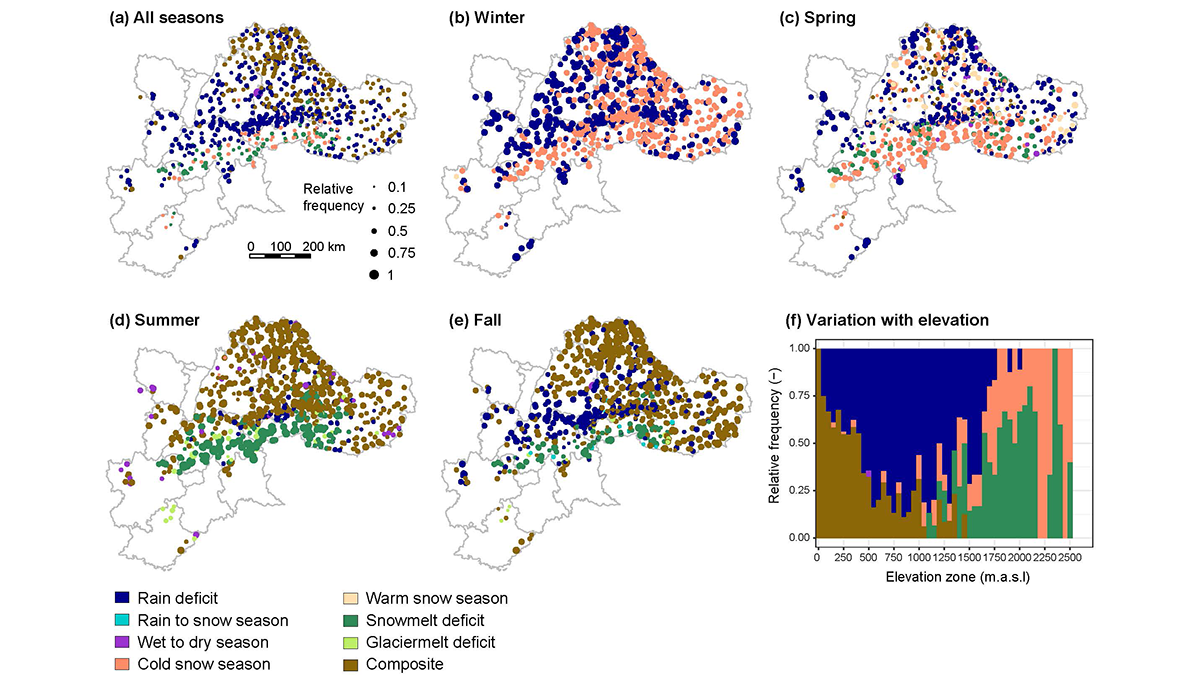Editors’ Highlights are summaries of recent papers by AGU’s journal editors.
Source: Geophysical Research Letters
The European Alps, sometimes described as the ‘water towers of Europe’, represent an important source of freshwater for millions of people residing in their watersheds. Understanding hydrology and particularly the streamflow drought regime of the Alps is critical for water management and growing hydropower production in the region.
Brunner et al. [2023] analyze the seasonality and relative frequency of different drought types in the region. Drought types have substantially changed over the past 50 years. Changes are more pronounced in high-elevation (greater than 1,500 meters) watersheds that exhibit more frequent occurrence of snowmelt-deficit droughts (caused by a lack of snowmelt discharge in spring and summer), with rainfall-deficit droughts (due to low rainfall and high evapotranspiration) and cold-snow-season droughts (caused by abnormally low temperatures in the snow season) becoming relatively less important. Such changes in the dominant type of drought generation mechanism have also increased drought severity in these watersheds, raising questions as to whether these trends will persist into the future.
Brunner, M. I., Götte, J., Schlemper, C., & Van Loon, A. F. (2023). Hydrological drought generation processes and severity are changing in the Alps. Geophysical Research Letters, 50, e2022GL101776. https://doi.org/10.1029/2022GL101776
—Valeriy Ivanov, Editor, Geophysical Research Letters

